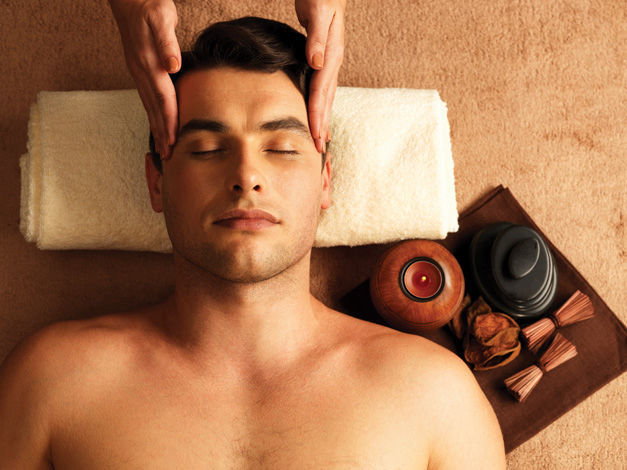
How Massage Therapy Works
Massage therapy has been used for centuries to promote relaxation and overall health. It is the technique of manipulating soft tissues, such as muscles, tendons, and ligaments. But beyond the comforting feeling of a good massage, research is beginning to unravel the intricate pathways through which massage benefits the body. This essay explores the underlying workings of massage ajman therapy and how it affects our physiology to improve general wellness.
The Symphony of Relaxation: The Nervous System at Play
One of the most well-documented benefits of massage is its ability to induce relaxation. When stress hits, our bodies enter the fight-or-flight response, characterized by increased heart rate, blood pressure, and cortisol (stress hormone) levels. Massage therapy helps activate the parasympathetic nervous system, the body’s built-in relaxation switch. This translates to a decrease in heart rate, blood pressure, and cortisol, promoting feelings of calm and reducing stress. Imagine massage as a dimmer switch for your stress response, turning down the intensity and allowing your body to unwind.
The Hormonal Shift: A Dance of Feel-Good Chemicals
Massage isn’t just about physical manipulation; it also triggers a cascade of hormonal changes. During a massage, the body releases a symphony of feel-good chemicals – endorphins, serotonin, and dopamine. Endorphins act as natural painkillers, reducing pain perception. Serotonin and dopamine elevate mood, fostering feelings of happiness and well-being. This hormonal interplay contributes to the stress-busting and mood-boosting effects of massage. Think of massage as a natural happiness booster, triggering the release of chemicals that promote a positive emotional state.
Enhanced Circulation: Aiding Delivery and Removal
Massage techniques like kneading and stroking stimulate blood flow throughout the body. This enhanced circulation delivers vital oxygen and nutrients to muscles and tissues, promoting healing and repair. Additionally, improved circulation facilitates the removal of waste products like lactic acid, which can contribute to muscle soreness. This explains why massage spa ajman can be so effective in aiding post-workout recovery and reducing muscle fatigue. Imagine massage as a flushing system for your muscles, delivering fresh nutrients and removing waste products that can lead to discomfort.
The Lymphatic Advantage: Boosting Immunity
The lymphatic system plays a crucial role in our immune function. It acts as a drainage system, removing waste products and toxins from the body. Massage can help stimulate the lymphatic system, promoting the drainage of these waste products and toxins. This can potentially strengthen the immune system and improve our ability to fight off illness. Think of massage as a lymphatic system jumpstart, helping your body clear out waste and potentially enhancing your defenses.
Pain Management: More Than Just Relaxation
Massage therapy has emerged as a valuable tool in pain management. By reducing muscle tension and improving circulation, massage can alleviate pain associated with various conditions like chronic low back pain, headaches, and fibromyalgia. Additionally, the release of endorphins during massage helps elevate pain tolerance. Imagine massage as a multi-pronged approach to pain relief, addressing muscle tension, improving circulation, and boosting the body’s natural pain-fighting mechanisms.
Beyond the Muscle: Cellular Benefits
Recent research has shed light on the cellular-level effects of massage. Studies suggest that massage can influence gene expression, potentially promoting the development of mitochondria, the powerhouses of our cells, and downregulating genes associated with inflammation. This exciting research paves the way for a deeper understanding of how massage influences healing and recovery at the most fundamental level. Imagine massage as a cellular communication tool, potentially influencing gene expression to promote healing and reduce inflammation.
A Multifaceted Approach: The Power of Touch
The science behind massage is a complex and evolving field. While the mechanisms continue to be unraveled, research consistently highlights the positive impact of massage on various aspects of health. From stress reduction and pain management to improved circulation and potentially enhanced immunity, massage offers a multifaceted approach to promoting well-being. Think of massage as a holistic toolbox, offering a variety of techniques to address different aspects of your health.
Important Considerations: Consulting a Healthcare Professional
While massage offers a multitude of benefits, it’s crucial to consult with a healthcare professional before starting massage therapy, especially if you have any underlying health conditions. A qualified massage therapist can tailor a treatment plan to your specific needs and ensure a safe and positive experience.
In Conclusion: Beyond the Relaxation Stereotype
Massage therapy is more than just a pampering session. It’s a scientifically validated approach to promoting relaxation, managing pain, and enhancing overall well-being. By understanding the science behind massage, we can harness the power of touch to cultivate a healthier and happier life. So next time you consider a massage, remember – it’s not just about feeling good in the moment, it’s about influencing your body’s inner workings to promote health and well-being on a deeper level.


